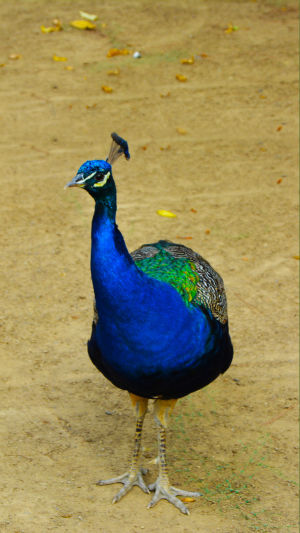There are two kinds of peacocks in the world: the green peacock and the blue peacock. They are closely related but very differently endangered. The green peacock was listed as an endangered species by the International Union for Conservation of Nature (IUCN) in 2009.
The peacock in the world is estimated to be less than 10,000, and the number in China is less than 300. The blue peacock is native to India, Sri Lanka, and other countries in South Asia. And is now an endangered species. Its artificial domestication technology is very mature.
Many countries have adopted it as an ornamental bird.
The green peacock, also known as the Javan peacock, is mainly distributed in Southeast Asia and is one of the genus Peacocks. The blue peacock, also known as the Indian peacock, is the national bird of India, mainly distributed in South Asia, and is one of the genus Peacock.
The difference between a green peacock and a blue peacock is mainly reflected in several aspects:
1. Color
The breast and neck of the green peacock are mainly emerald green and the cheeks are yellow, while the blue peacock's breast and neck are mainly metallic blue and the cheeks are white.
2. Feather
The feather crest on the head of the green peacock is cluster-shaped, and the neck feathers are scaly, while the feather crest on the head of the blue peacock is fan-shaped, and the neck feathers are silky.
3. Body shape
The green peacock is the largest pheasant, while the blue peacock is relatively smaller. The blue peacock has longer legs, neck, and plumage, but lacks saddle feathers.
4. Call
The green peacock's song is high and loud, like "ga wo, ga wo", while the blue peacock's call is similar to "wa wa", with a long drawl, like a crow.
Studies have shown that green peacocks are more "silent" than blue peacocks, which sing frequently. In terms of courtship behavior, the blue peacock is a polygynous bird.
It has long been speculated that the green peacock has similar habits to its relatives, but in field observations, scientists have recorded that the green peacock maintains a monogamous and one-female pairing state. However, due to the very small number of wild populations of green peacocks, the conclusions of this research are still controversial.
5. Distribution
Green peacocks are mainly distributed in Southeast Asian countries such as Cambodia, China, Indonesia, Laos, Myanmar, Thailand, and Vietnam, while blue peacocks are mainly distributed in South Asian countries such as Bangladesh, Bhutan, Iran, India, Nepal, Pakistan, and Sri Lanka.
6. Protection level
The green peacock is listed in the IUCN: Endangered Species (EN), while the blue peacock is listed in the IUCN: Low Threat (LC).
Did you learn it? In fact, what everyone sees in the zoo is basically a blue peacock. Because the green peacock is listed as an endangered species by the International Union for Conservation of Nature, and the number is still declining.





